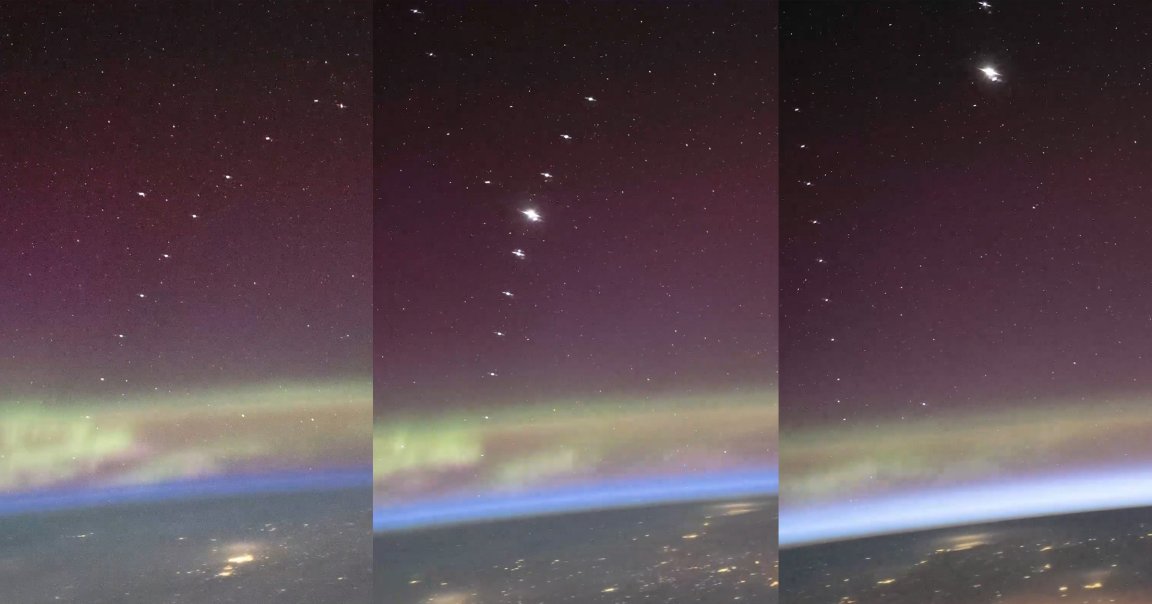
Tesla might be in shambles, and Twitter might be a shell of its former self, but there is one venture Elon Musk has found success in: filling our atmosphere with high-tech garbage.
Recent footage released by Don Pettit, a career NASA astronaut who recently returned from a 208-day stint aboard the International Space Station, shows multiple convoys of Musk’s SpaceX satellites crisscrossing each other over the horizon.
“How visible were these by eye from this unique vantage point?” one social media user asked. “Very visible,” the astronaut replied. “Many were as bright as Jupiter, they would flash from 1 to 10 seconds.”
It’s a fascinating look at our planet from an angle few of us will ever get a chance to witness with our own eyes — the kind of photography Pettit has become well known for over the years. But this particular shot is noteworthy for another reason: as evidence of the sheer number of spacecraft Musk is pumping into our skies.
As of October, there are more than 8,000 active Starlink satellites swirling around the planet’s Low Earth Orbit. Dozens more are reportedly inactive, gathering space dust as they tumble through the heavens. Astrophysicist Jonathan McDowell recently warned that one or two of those are now tumbling back to Earth every day, a number that’s only expected to rise as Musk pursues his ambitious goal of 42,000 satellites in orbit, in what he calls a “megaconstellation.”
While the astronaut seemed at least mildly impressed by the orbital “satellite train,” his comments are instructive. Satellites are indeed bright, cluttering our view of the cosmos from the ground, and interfering with radio telescope observations.
One survey analyzed the effect of Starlink satellite emissions on over 76 million radio telescope missions. It found that Musk’s satellites photobombed as many as 30 percent of the images captured in some datasets, in addition to transmitting on radio frequencies reserved exclusively for radio astronomy.
They even interfere with orbital platforms like the Hubble Space Telescope, redirecting the bright glare of the Sun into images of far-off asteroids.
That’s to say nothing of the pollution emitted when each of these satellites begins to burn up as they reenter our atmosphere.
While Starlink is succeeding at connecting humans throughout the globe, it does so at an increasingly undeniable cost — and to the financial benefit of one of the world’s richest men.
More on Starlink: There’s a Giant Problem With SpaceX’s Starlink Satellites